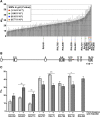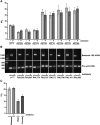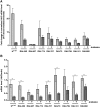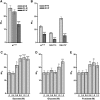Death following traumatic brain injury in Drosophila is associated with intestinal barrier dysfunction
- PMID: 25742603
- PMCID: PMC4377547
- DOI: 10.7554/eLife.04790
Death following traumatic brain injury in Drosophila is associated with intestinal barrier dysfunction
Abstract
Traumatic brain injury (TBI) is a major cause of death and disability worldwide. Unfavorable TBI outcomes result from primary mechanical injuries to the brain and ensuing secondary non-mechanical injuries that are not limited to the brain. Our genome-wide association study of Drosophila melanogaster revealed that the probability of death following TBI is associated with single nucleotide polymorphisms in genes involved in tissue barrier function and glucose homeostasis. We found that TBI causes intestinal and blood-brain barrier dysfunction and that intestinal barrier dysfunction is highly correlated with the probability of death. Furthermore, we found that ingestion of glucose after a primary injury increases the probability of death through a secondary injury mechanism that exacerbates intestinal barrier dysfunction. Our results indicate that natural variation in the probability of death following TBI is due in part to genetic differences that affect intestinal barrier dysfunction.
Keywords: D. melanogaster; blood–brain barrier; chromosomes; genes; glucose homeostasis; grainyhead; hexosamine biosynthesis pathway; innate immune response; neuroscience; septate junction.
Conflict of interest statement
The authors declare that no competing interests exist.
Figures

















Similar articles
-
The gut reaction to traumatic brain injury.Fly (Austin). 2015;9(2):68-74. doi: 10.1080/19336934.2015.1085623. Fly (Austin). 2015. PMID: 26291482 Free PMC article. Review.
-
Intestinal barrier dysfunction links metabolic and inflammatory markers of aging to death in Drosophila.Proc Natl Acad Sci U S A. 2012 Dec 26;109(52):21528-33. doi: 10.1073/pnas.1215849110. Epub 2012 Dec 12. Proc Natl Acad Sci U S A. 2012. PMID: 23236133 Free PMC article.
-
Survival Following Traumatic Brain Injury in Drosophila Is Increased by Heterozygosity for a Mutation of the NF-κB Innate Immune Response Transcription Factor Relish.Genetics. 2020 Dec;216(4):1117-1136. doi: 10.1534/genetics.120.303776. Epub 2020 Oct 27. Genetics. 2020. PMID: 33109529 Free PMC article.
-
The role of neuropeptide Y and aquaporin 4 in the pathogenesis of intestinal dysfunction caused by traumatic brain injury.J Surg Res. 2013 Oct;184(2):1006-12. doi: 10.1016/j.jss.2013.03.096. Epub 2013 Apr 18. J Surg Res. 2013. PMID: 23622727
-
A Mouse Controlled Cortical Impact Model of Traumatic Brain Injury for Studying Blood-Brain Barrier Dysfunctions.Methods Mol Biol. 2018;1717:37-52. doi: 10.1007/978-1-4939-7526-6_4. Methods Mol Biol. 2018. PMID: 29468582 Review.
Cited by
-
Treatment with Bacterial Biologics Promotes Healthy Aging and Traumatic Brain Injury Responses in Adult Drosophila, Modeling the Gut-Brain Axis and Inflammation Responses.Cells. 2021 Apr 14;10(4):900. doi: 10.3390/cells10040900. Cells. 2021. PMID: 33919883 Free PMC article.
-
Drosophila Exhibit Divergent Sex-Based Responses in Transcription and Motor Function After Traumatic Brain Injury.Front Neurol. 2020 Jun 19;11:511. doi: 10.3389/fneur.2020.00511. eCollection 2020. Front Neurol. 2020. PMID: 32636795 Free PMC article.
-
Organ-to-Organ Communication: A Drosophila Gastrointestinal Tract Perspective.Front Cell Dev Biol. 2017 Apr 3;5:29. doi: 10.3389/fcell.2017.00029. eCollection 2017. Front Cell Dev Biol. 2017. PMID: 28421183 Free PMC article. Review.
-
Neuroinflammation in Parkinson's Disease - Putative Pathomechanisms and Targets for Disease-Modification.Front Immunol. 2022 May 18;13:878771. doi: 10.3389/fimmu.2022.878771. eCollection 2022. Front Immunol. 2022. PMID: 35663989 Free PMC article. Review.
-
Characterizing dopaminergic neuron vulnerability using genome-wide analysis.Genetics. 2021 Aug 9;218(4):iyab081. doi: 10.1093/genetics/iyab081. Genetics. 2021. PMID: 34038543 Free PMC article.
References
-
- Balsiger Z, Leudkte J, Mawer S, Willey M. HIT device high speed analysis. 2014. https://www.youtube.com/watch?v=hkmCXwPacBQ.
Publication types
MeSH terms
Substances
Grants and funding
LinkOut - more resources
Full Text Sources
Other Literature Sources
Molecular Biology Databases

